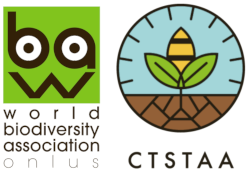Distribuzione degli aplotipi del DNA mitocondriale dell’ape mellifera in una regione italiana dove un atto legislativo tutela la sottospecie Apis mellifera ligustica
_______________________________________________________________________________________________________________________________________
A HIGH-DENSITY AND TIME DYNAMIC DISTRIBUTION MAP OF HONEY BEE MITOCHONDRIAL DNA LINEAGES COVERING THE ENTIRE ITALY
_______________________________________________________________________________________________________________________________________
Libro del 25° Congresso ASPA
_______________________________________________________________________________________________________________________________________
Application of Next Generation Semiconductor-Based Sequencing for the Identification
of Apis mellifera Complementary Sex Determiner (csd) Alleles from Honey DNA
by Samuele Bovo, Anisa Ribani, Valerio Joe Utzeri, Valeria Taurisano, Giuseppina Schiavo, Matteo Bolner and Luca Fontanesi * Department of Agricultural and Food Sciences, University of Bologna, Viale Giuseppe Fanin 46, 40127 Bologna, Italy * Author to whom correspondence should be addressed. Academic Editor: Yehuda Y. Ben-Shahar Insects2021, 12(10), 868; https://doi.org/10.3390/insects12100868 Received: 19 August 2021 / Revised: 19 September 2021 / Accepted: 21 September 2021 / Published: 24 September 2021 (This article belongs to the Section Insect Molecular Biology and Genomics)
Download PDFBrowse Figures Citation Export
Simple Summary
Honey contains traces of the DNA of the honey bees that produced it. This environmental DNA can therefore be used to investigate the genome of the honey bees. In this study, we used a next generation sequencing technology to analyze the variability of a key gene of Apis mellifera L., the complementary sex determiner (csd) gene, using honey environmental DNA as a source of honey bee DNA. This gene determines the sex of the bees. Two different alleles at this locus are needed to produce females whereas males have only one copy of this gene as they are haploid. In case two identical alleles are present in a diploid individual, the larvae are not vital and are discarded by the workers. Therefore, there is an advantage in maintaining a large csd diversity in honey bee populations. In light of the recent decline in honey bee populations, it is important to monitor the allele variability at this gene. The applied methodology provided a new strategy to disclose the genetic diversity at the csd gene at the population-wide level and identify most, if not all, csd alleles present in the colonies in a single analysis.
Abstract
The complementary sex determiner (csd) gene plays an essential role in the sex determination of Apis mellifera L. Females develop only if fertilized eggs have functional heterozygous genotypes at this gene whereas males, being haploids, are hemizygous. Two identical csd alleles produce non vital males. In light of the recent decline in honey bee populations, it is therefore important to monitor the allele variability at this gene. In this study, we tested the application of next generation semiconductor-based sequencing technology (Ion Torrent) coupled with environmental honey DNA as a source of honey bee genome information to retrieve massive sequencing data for the analysis of variability at the hypervariable region (HVR) of the csd gene. DNA was extracted from 12 honey samples collected from honeycombs directly retrieved from 12 different colonies. A specifically designed bioinformatic pipeline, applied to analyze a total of about 1.5 million reads, identified a total of 160 different csd alleles, 55% of which were novel. The average number of alleles per sample was compatible with the number of expected patrilines per colony, according to the mating behavior of the queens. Allele diversity at the csd could also provide information useful to reconstruct the history of the honey. Keywords: environmental DNA; genetic diversity; honey bee; inbreeding; polymorphism; population genomics; variability
LEGGI TUTTA LA PUBBLICAZIONE clickando qui
